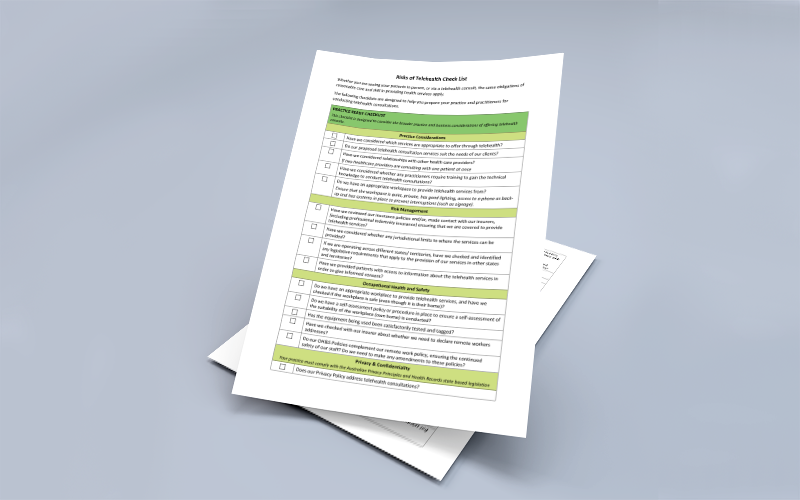From a Lawyer’s Perspective

This is a guest post written by Sarah Bartholomeusz from YouLegal.
Australia, as we all know, is a wide-brown land. Depending on where you live, medical facilities and medical specialists are not always close to home. For those who live in rural or remote Australia and are unwell and unable to spend a lot of time travelling to a hospital or medical centre, access to healthcare has always been an issue.
With the current COVID-19 pandemic, patients are considering the risk of attending medical facilities in person when they could just #stayathome.
Enter – Telehealth!
Telehealth has very quickly risen to popularity and prominence in these changing times. Doctors, patients, practice managers and their team members are all getting their heads around what this means for the future of how medicine is practiced in Australia.
Among other things, telehealth is removing barriers to accessing medical services. It gives the ability for everyone who needs access to medical attention to get access. There are potential efficiencies for both patients and doctors that can be gained. This will also lessen the costs per visit.
These are some of the advantages of telehealth, but are medical practices ready to embrace this new development? Both technically and financially? Let’s have a look at the issues that might arise.
Confidentiality, Privacy & Cyber Security
Patients and doctors alike are concerned about privacy and confidentiality when it comes to medical issues. How data can be secured will be top priority for those who are undertaking telehealth, including keeping the doctor’s personal information confidential as well.
Maintaining confidentiality is an essential part of clinical consultation and thinking about how it can be maintained in telehealth is a big consideration, especially where doctors are working remotely away from the practice. This is why I’ve made a checklist (below) to help you ensure you’re properly covered.
Making the Right Tech Choices
There are a number of tech choices to make when transitioning to telehealth and we all know that the effectiveness of our service is dependent on the effectiveness of the technology we use. Even telehealth telephone consults can have difficulties if your patient misses your call and can’t easily return the call. There can be many frustrated people when the tech doesn’t work.
Simply put, technology affects service delivery. Therefore, it is important to seriously consider what is going to work best for your situation. Use the checklist attached to learn more about navigating technology.
Billing
Whether it is a face-to-face consultation or telehealth, your practice will have a policy on your professional fees. The government is changing what is acceptable on a regular basis, so keeping up-to-date with what is allowable and keeping everyone in the practice updated is crucial. I cover all the action items around billing in the checklist.
Please download the full checklist by clicking the button below.
Future Medicine – Now
Telehealth is a cost-effective method for medical centres to provide services to some patients. Although this is assuming it is run well and things are carefully considered. There are many things practices need to take into consideration to do telehealth well. These are not limited to the checklist I have made. Although this should be a good place to start.
If you need more help you can reach me at [email protected].



